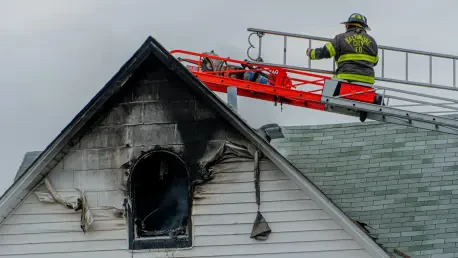Imagine a world where the devastating impact of residential fires could be slashed by over half, simply through a small device plugged into an everyday electrical outlet. A groundbreaking study from the Insurance Information Institute (Triple-I) and Whisker Labs, supported by analytical expertise from Octagram Analytics, has revealed a transformative advancement in fire prevention technology. This research showcases how an Internet of Things (IoT) solution, known as the Ting device, has dramatically reduced fire claims in homes across the nation. By leveraging real-time monitoring and artificial intelligence, this innovation offers not just safety but also significant cost savings for homeowners and insurers alike. The implications of such technology signal a new era in risk management, where prevention takes precedence over reaction, potentially reshaping how safety is approached in residential settings.
Unveiling the Impact of Smart Home Technology
Dramatic Reduction in Fire Claims
The findings from the comprehensive study paint a compelling picture of the Ting device’s effectiveness in curbing residential fire incidents. Homes equipped with this IoT solution have seen a staggering 63% drop in certain non-catastrophic fire claims within just three years of installation. This equates to a reduction of 0.39 fire claims per 1,000 policy years by the third year, translating to an average annual saving of $81 per customer on fire-related losses. Unlike traditional fire prevention methods, Ting operates by continuously monitoring a home’s electrical system, processing an astonishing 30 million voltage measurements every second. Using advanced artificial intelligence, it detects abnormal arcing and other early warning signs of potential electrical fires. Such proactive hazard identification addresses risks in roughly one out of every 60 homes, covering issues from internal wiring to external utility supply problems, thereby preventing disasters before they ignite.
Beyond Fire Prevention: Additional Safety Benefits
While the primary focus of the Ting device remains fire prevention, its utility extends to other areas of home safety, offering a broader protective net for homeowners. The device also monitors indoor temperatures to prevent issues like frozen or burst pipes, sending alerts that benefit approximately one in every 560 homes each year. This added functionality underscores the versatility of IoT solutions in addressing multiple risks under a single platform. Although the current study does not quantify the impact on water damage claims, there is a strong indication that such benefits could further reduce losses for insurers and enhance policyholder satisfaction. The integration of these features into a single, easy-to-install device highlights a shift toward comprehensive risk mitigation, where technology not only saves lives but also protects property from a variety of potential damages, making homes safer in more ways than one.
Industry Adoption and Future Implications
Growing Integration in Insurance Practices
The insurance sector is undergoing a notable transformation with the increasing adoption of IoT technologies like the Ting device, reflecting a broader trend toward predictive and preventive strategies. Over 1 million units have already been deployed nationwide, with an additional 50,000 installations occurring monthly. A significant number of property and casualty insurers—30 to be exact—now provide this technology to policyholders at no cost, recognizing its value in reducing claims and enhancing customer safety. Industry leaders have voiced strong support for this shift, noting the dual advantage of lowering premiums and improving risk profiles. This widespread integration signals a departure from traditional reactive models, positioning insurers as active partners in loss prevention. The momentum behind such adoption suggests that smart home solutions could soon become a standard offering, fundamentally altering how risk is managed within the industry.
Shaping the Future of Risk Mitigation
Looking ahead, the implications of the Ting device and similar IoT innovations extend far beyond current applications, hinting at a future where technology plays a central role in home safety standards. The study’s self-controlled methodology, which compared claims data before and after installation in the same homes, provides robust evidence of the device’s impact while overcoming challenges like sampling bias. This analytical rigor has paved the way for discussions on expanding the scope of such technologies to other areas of loss prevention, potentially including water damage and beyond. As more data becomes available, stakeholders anticipate further insights into long-term benefits, such as improved policyholder retention. The collective perspective among insurers and technology providers points to a shared vision of leveraging innovation for mutual gain, ensuring safer homes and more sustainable insurance practices. Reflecting on these advancements, it’s clear that past efforts have culminated in a pivotal moment for the industry, setting a precedent for proactive risk management that continues to evolve.









